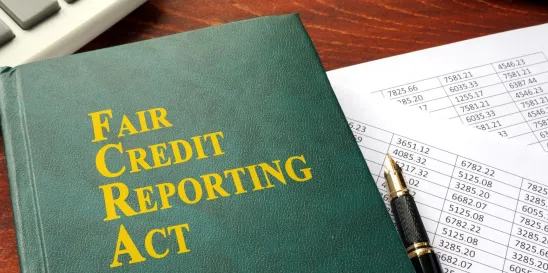When there is a willful violation to the Fair Credit Reporting Act (”FCRA”) consumers can recover either actual damages sustained by the consumer or statutory damages of no less than $100 and not more than $1000. (Punitive damages and attorney fees also are available). There has been a trend in the district courts examining whether plaintiffs must prove that they suffered actual damage in order to recover statutory damages. Since 2007 several Circuits have reviewed this argument and each has explained that the provision for statutory damages does not require a showing of “actual damages.” The Eleventh Circuit is the most recent to weigh in on this question in Santos v. Healthcare Revenue Recovery Grp., and agrees with its sister Circuits.
In Santos, two consumers brought an action against Experian Information Solutions, alleging they willfully violated the FCRA when they sent out incorrect credit reports for more than 2.1 million consumers. The plaintiffs sought to recover statutory damages pursuant to section 1681n(a)(1)(A) of the FCRA, which includes the damages provision that allows “any actual damages sustained by the consumer as a result of the failure or damages of not less than $100 and not more than $1,000.” Experian argued twice that proof of actual damages was required under 1681n(a)(1)(A). First, on summary judgement Experian argued the damages provision required the plaintiffs to prove they were denied credit and incurred actual damages as the result of their wrongdoing. The plaintiffs argued the statutory damages option did not require them to provide proof of actual damages. Relying on a 1991 Eleventh Circuit case, Cahlin v. General Motors Acceptance Corporation, the district court agreed with Experian, but denied summary judgement because there was proof that plaintiffs did suffer actual damages.
When the plaintiffs sought to certify a class, Experian argued the same actual damages issue, but this time as support that the class did not satisfy the predominance requirement for class actions. They argued each class member would need to individually prove they were actually damaged by their willful violation of the Act, and the individual proof of damages would predominate over the common questions of the class. The presiding magistrate judge agreed, explaining the court would have to embark on an individual and highly factual determination for each class member, and thus the class was not certifiable. On appeal, the Eleventh Circuit rejected this analysis.
The Eleventh Circuit undertook a statutory construction analysis of section 1681n(a)(1)(A). It concluded that the second option to recover statutory damages, for several reasons, did not require actual damages. First, unlike the first option (actual damages) the second option (statutory range of damages) did not include a causal element in order to recover damages. Second, Congress specifically put “or” in between the first and second options denoting that there were two alternatives to recover under the statute. Third, consistent with the Act as a whole, it followed that willful conduct would not require the same proof that less serious negligent conduct would require. Fourth, the title of the second option, “Minimum Civil Liability for Willful Noncompliance,” suggested the addition of the option was to create minimum liability even if the consumer did not meet the requirements for actual damages under the first option. And lastly, this interpretation was consistent with how the court read similar language in other federal statutes, such as the Truth in Lending Act.
The Eleventh Circuit also rejected Experian’s argument that it was bound by Cahlin v. General Motors Acceptance Corporation, which held in 1991 that section 1681n(a)(1)(A) required proof of actual damages. The Court explained that the ruling fell before the 1996 revisions to the FCRA which added the statutory damages option. Because the law had changed after Cahlin was decided, it did not address whether the second option would allow statutory damages in the absence of actual damages.
The Eleventh Circuit is joined by the Seventh, Eighth, Ninth, and Tenth Circuits in holding that actual damages need not be proven to pursue the statutory range of damages under the FCRA.
This article was co-authored by Raychelle Eddings.




 />i
/>i

